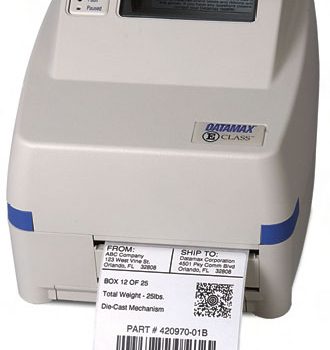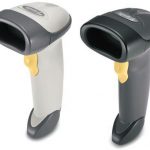These printers are rugged and reliable with mostly all-metal construction. The resolution can be 203 DPI, 305 DPI, 406 DPI or 600 DPI. They are meant for moderate to high volume printing for users who demand reliability, productivity, consistent print quality, network compatibility. The printers can have many options like internal rewinders, peel & present modules, etc. Some examples of these printers are Zebra’s 105SL, 220XiIII Plus, Sato’s CL408e/CL412e, Datamax’s I-4208, Intermec’s 3400 and 4400 printers.
Dedicated bar code printers come in two variations: Direct Thermal and Thermal Transfer:
- Direct Thermal refers to the manner in which an image (bar code) is printed on paper. This technology employs heat-sensitive paper media to make images (much the same way as roll paper fax machines). Direct Thermal labels are sensitive to heat and light. They have a short useful life span, but in many cases that is all you need. Additionally, if you keep the labels out of heat and light, they will have an extended life span. Direct Thermal printing should be considered when you have applications that only need temporary labels. As an example, a lot of shipping labels employ this technology. This is a less expensive way to go because: 1) The printers are cheaper, and 2) you do not incur ribbon expenses as you would with Thermal Transfer printing methods.
- Thermal Transfer printing, on the other hand requires a roll of heat-sensitive ink ribbon. Because it utilizes a ribbon it does not require heat-sensitive paper media. Heat transfers the appropriate image from the ribbon onto the paper label. This technology is more expensive, but is your only choice when you need permanent labels on products or boxes (for warehousing and retail environments).




